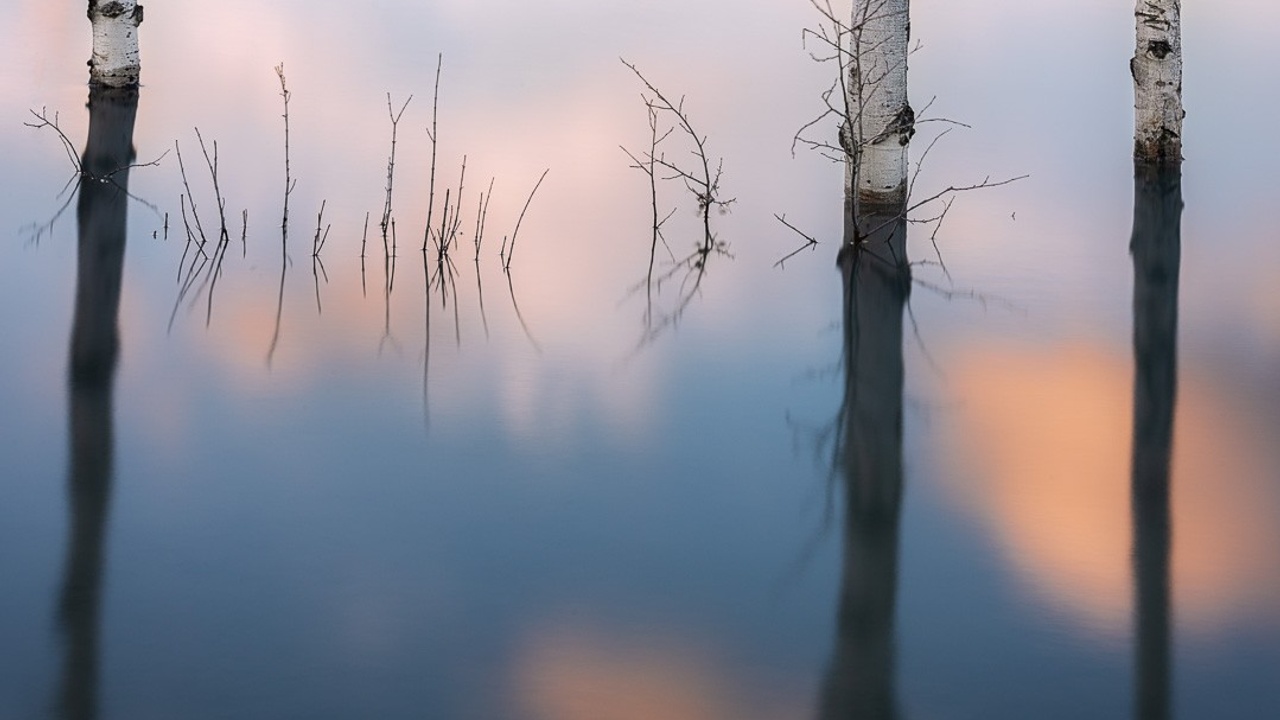
A Trick to Drawing out Reflections
Oct 19, 2021Reflections are one of my favourite compositional elements in many landscape images. I find myself captivated by the simplicity, balance and infusion of peacefulness within a reflecting landscape scene. But as we all know, there are conditions favourable to reflections. Calm still waters produce the finest reflections, but are these conditions the only option for reflections in a landscape scene?
I recently travelled out into David Thompson Country, a beautiful region that borders Banff National Park. Stunning natural phenomenons occur in this region throughout different times of the year. The draw during the fall has been the high lake waters that flood the Aspen forests around the lake, creating a beautifully unique opportunity to photography Aspens immersed in water.
However, the weather conditions around the lake that flood these Aspens are notoriously poor. Strong winds that help blow snow off and smooth out the lake's surface, creating prime conditions for photographing methane bubbles trapped in ice during the winter, exist during the warmer weather months too and are not conducive to producing reflections.
So what's a photographer to do when waters ripple but the element of reflection is a goal?
Long exposure in landscape photography is not only a beautifully creative technique that shows movement, but it can also help tame restless water.
In the image below, the waters were rippled and not reflecting to my liking. To bring out the reflection of the Aspens in the water, I tried different lengths of long exposure, finally settling on about 10 seconds. This calmed the waters enough to smooth out the ripples, yet not too much in which the reflection became too blurred.

ISO 100, 86mm, f16, 10 seconds
There is certainly a limit to how restless waters can be before this technique of using long exposure to draw out reflection is rendered ineffective. However, if you ever encounter a scene in which reflections are not crisp due to water movement, give long exposure a try. Don't be afraid to experiment with different lengths of long exposure as well. Those added seconds may enhance a less than pristine reflection.


